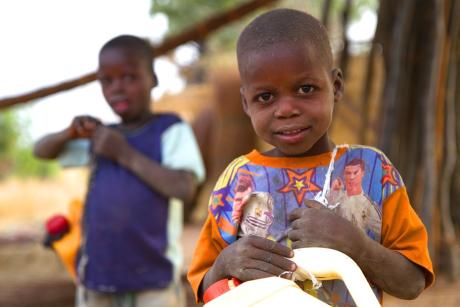
During her global mental health fieldwork in Nepal last summer, Martha Berg (left) met with the founders of Psychbigyaan Network Nepal, a radio station and advocacy group that does community outreach projects for mental health promotion.
Published February 9, 2017, last updated on October 12, 2017 under Voices of DGHI
By Martha Berg, 2nd-year MSc-GH student and Payal Chakraborty, 1st-year MSc-GH student
At the beginning of her class presentation last fall, Dr. Kristen Shirey, assistant research professor in global health, shared with us some disturbing statistics: 10 to 15 percent of those with mental illness in low income countries receive the treatment they need, and 54 percent of those with mental illness in high-income countries receive the treatment they need.
Because a significant proportion of the populations, especially in LMICs, doesWe not have access to mental health treatment, there is a great need to scale up mental health services. Dr. Shirey introduced the WHO Mental Health Gap Action Programme (mhGAP) as a well-known example of a tool developed to help facilitate scaling of these services. While this intervention has many advantages, many have raised concerns about attempts to universalize mental health, and whether applying western labels more generally is useful in practice.
As Dr. Shirey discussed, the mhGAP is an important tool for clinical decision-making protocols, particularly for non-specialized providers, in addition to providing policy and infrastructural recommendations. The mhGAP intervention guide has had many useful benefits:
- It is available in many different languages, so it can be applied globally to train and build mental health workforces as well as facilitate task shifting and/or task sharing.
- It attempts to standardize mental health decisions made by non-specialist providers by giving a guide to treatment, thus improving communication and coordination of care.
- Applying a Western label does not only help an individual access treatment, but it also gives him or her a sense of identity and ability to cope with a disability
- It is an initial step towards defining a gold standard of care, which is very important for quantifying need for services concretely, and consequently for making a case (in terms of funding and resources) for mental health in the global health arena.
On the other hand, using western diagnostic categories in global settings may not be an effective way of facilitating access to treatment. Many psychiatrists, including Dr. Shirey, are moving toward a more holistic view of mental health, and this approach is especially pertinent cross-culturally.
An individual’s social and cultural context influences how they will experience and express their mental distress, so imposing western concepts of disorder may not be relevant. The symptoms listed in the mhGAP, for example, could be very different from those expressed to a healthcare provider. Therefore, simply listing common western symptoms and a procedure for responding to each is not an effective way to treat non-universal phenomena such as mental disorders.
While the mhGAP effectively simplifies complex treatments to be employed by lay providers, if the symptoms leading to these treatment pathways are not culturally relevant, this simplified tool offers little utility.
Furthermore, applying western labels could cause harm to those they intend to help. Whereas in western settings, diagnostic labels may contribute a sense of identity or explanation, this might not be the case universally.
In many LMIC settings, those diagnosed as mentally ill are locked up, chained to posts or similarly treated as social pariahs. Assigning a label of schizophrenia, for example, in one such setting would potentially do more harm than good. Therefore, we must look at stigma to inform our choices about the use of diagnostic criteria.
At what point does protection of human rights win out over attempts to simplify and universalize an individual’s suffering? And if diagnostic criteria are culturally-bound to the extent that a universal guide like the mhGAP is ineffective, do we in fact gain anything from the use of these labels?
This blog post was originally published on the class blog for the Fall 2016 Global Health Challenges class and was republished with permission from the authors.


